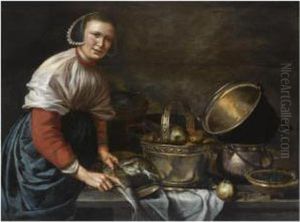Odekercken Willem Paintings
Willem van Odekercken, also known as Willem van Odekerken, was a Dutch Golden Age painter whose life and work were emblematic of the period's artistic fervor and cultural richness. Born in the year 1610, van Odekercken's early life is not well-documented, which is common for many artists of the era. However, it is believed that he was active as an artist mainly in the middle of the 17th century, a time when Dutch art was flourishing and the demand for paintings was at an all-time high due to the economic prosperity of the Dutch Republic.
Although specific details about van Odekercken's training and early career are scarce, he would have likely apprenticed under a master painter, as was customary at the time. During his career, he would have been part of a guild, and his work would have reflected the era's popular genres, such as landscapes, still lifes, portraits, and historical scenes. Dutch artists of the period were known for their attention to detail, use of light and shadow, and realistic representation, qualities that van Odekercken would have strived to embody in his own paintings.
Willem van Odekercken's body of work has not been extensively chronicled, and as such, his contributions have largely been overshadowed by more famous contemporaries such as Rembrandt, Vermeer, and Frans Hals. Despite this, it is important to recognize that artists like van Odekercken played a significant role in the fabric of Dutch artistic life, producing works for a burgeoning middle-class market and participating in the cultural discourse of the time.
Van Odekercken's death in 1678 marked the end of his contributions to the art world, but the exact circumstances of his later life and death are not widely recorded. The legacy of painters like Willem van Odekercken is often pieced together through surviving artworks, documents, and the overarching history of the period in which they lived. His works, if extant, would provide valuable insight into the lesser-known artists of the Dutch Golden Age, contributing to the broader understanding of the period's artistic landscape.




